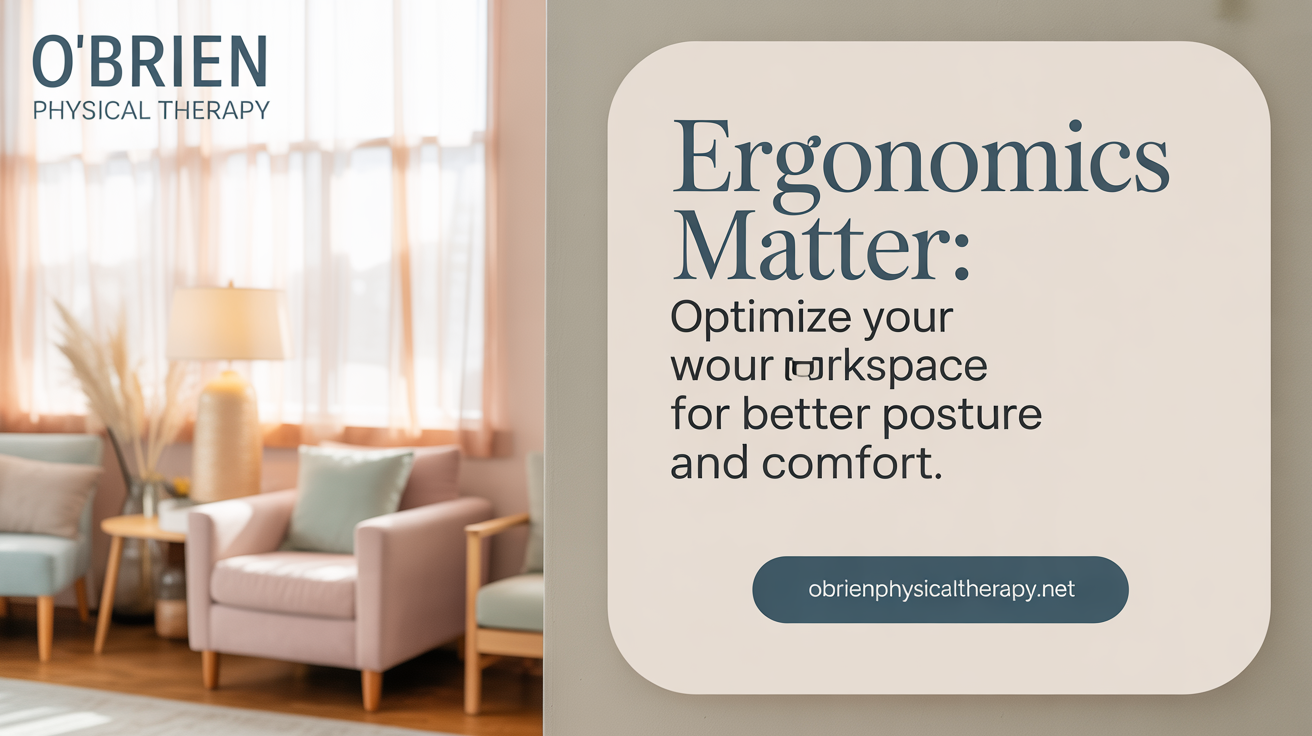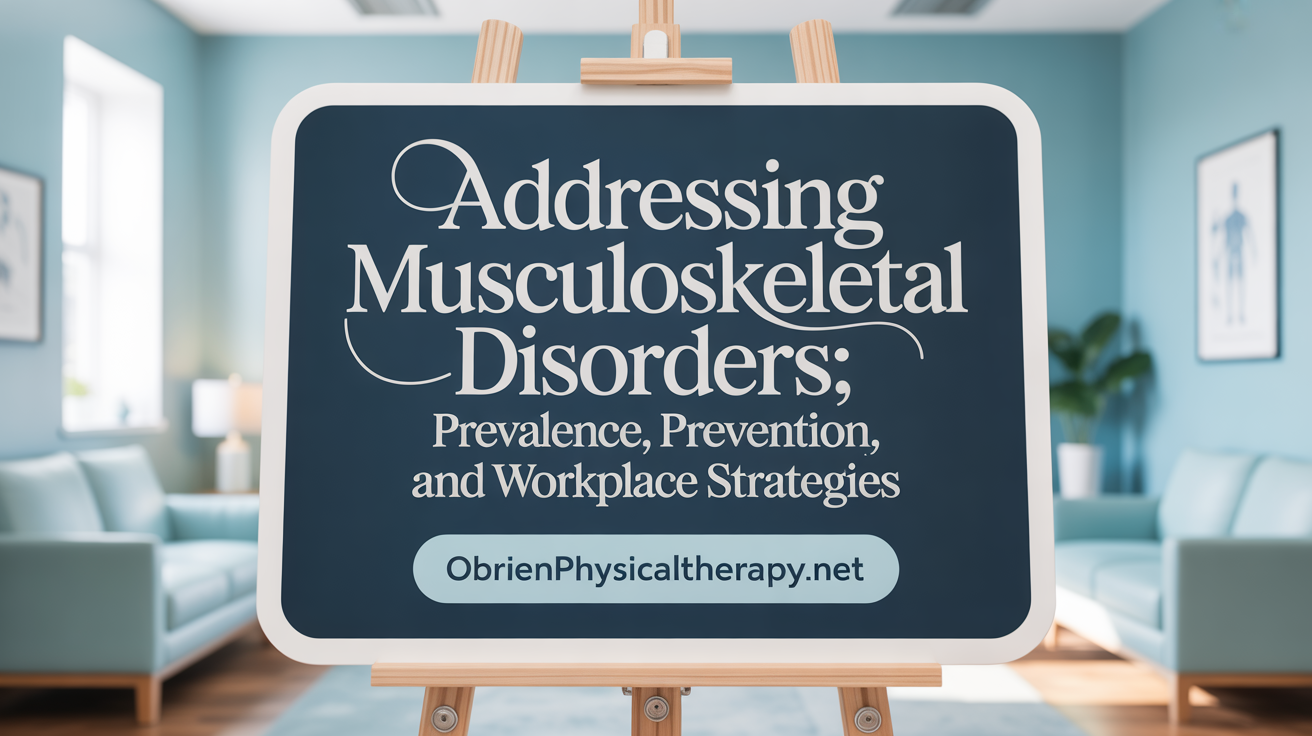The Growing Concern Over Desk Job Health Impacts
As work environments have evolved, desk-bound jobs have become the norm, leading to an increase in postural issues and physical strain among office workers. Sedentary behavior, characterized by prolonged sitting, poses significant risks to musculoskeletal health and overall well-being. This article delves into the data and research uncovering how desk jobs contribute to physical ailments and offers practical strategies for improved posture and health.
Physical Symptoms and Common Side Effects of Prolonged Sitting
What are the physical symptoms of prolonged sitting?
Prolonged sitting leads to a variety of physical symptoms that can affect overall health and comfort. Office workers and individuals with sedentary routines often experience tiredness, swelling, and achiness in the lower legs caused by blood pooling and fluid retention. Muscles in the legs, glutes, and hip flexors tend to weaken and shorten over time, which can cause persistent lower back and hip pain. Poor posture during long hours sitting can contribute to neck, shoulder, and upper back stiffness, increasing the risk of disc degeneration and joint discomfort.
A significant concern associated with extended sitting is the risk of blood clots, such as deep vein thrombosis (DVT). This condition occurs when blood flow is significantly slowed or pooled in the deep veins of the legs, raising the risk of potentially life-threatening complications. Overall, sitting for long periods often results in fatigue, muscle atrophy, and discomfort in multiple musculoskeletal regions.
What are the common side effects of prolonged sitting?
Extended periods of inactivity are linked to various adverse health effects beyond immediate discomfort. Muscle atrophy is common, particularly in the legs and glutes, weakening these muscles and making physical activity more difficult over time.
Prolonged sitting also contributes to metabolic problems such as obesity, insulin resistance, and the development of type 2 diabetes. It increases the risk of cardiovascular diseases, including hypertension and heart attack, and certain types of cancer, notably colon and uterine cancers.
Musculoskeletal issues are prevalent, including persistent pain in the back, neck, and shoulders. Sitting for long stretches can also cause the hip flexors to tighten, which can lead to postural problems and lower back stress. Mental health is not spared; extended sedentary behavior is associated with higher incidences of depression, anxiety, and decreased cognitive function.
In summary, the combination of physical discomfort and broader health risks makes regular movement and ergonomic considerations essential for individuals engaged in prolonged sitting activities.
Health Risks Linked to Sedentary Desk Work and Sitting All Day

What health risks are associated with sitting in a chair all day?
Sitting continuously in a chair for extended periods poses numerous health dangers. Research indicates a strong link between prolonged sitting and increased likelihood of developing cardiovascular diseases, type 2 diabetes, and certain types of cancers. When sitting for many hours without interruption, the body’s ability to regulate blood sugar diminishes, leading to potential weight gain and insulin resistance. Additionally, sedentary behavior can cause musculoskeletal problems such as lower back pain, neck stiffness, muscle weakness, and poor posture.
Blood flow slows down, increasing the risk of blood clots like deep vein thrombosis (DVT), which can be life-threatening if a clot moves to the lungs. Mental health can also suffer, with prolonged sedentariness associated with higher rates of depression and anxiety. To counteract these risks, experts recommend taking regular movement breaks, standing, or walking frequently, and aiming for at least 150 to 300 minutes of moderate exercise per week.
How does sedentary behavior impact mortality risk?
Extended periods of inactivity significantly elevate the risk of early death from various causes. Studies show that individuals who sit for more than 6 to 8 hours daily face about a 30% higher chance of mortality, especially from heart disease and cancer. For example, older women sitting over 11 hours a day are at even greater risk.
The relationship between sitting time and mortality is non-linear; each additional hour of sedentary behavior can increase death risk by approximately 3-5%. Regularly breaking up sitting time with light physical activity can greatly reduce this hazard. Simple actions like short walks or standing during work significantly decrease the potential negative outcomes related to prolonged sitting.
Can sitting on your leg cause health problems?
Sitting in positions that restrict circulation, such as sitting on your leg, can induce health issues. Extended periods of such postures may cause blood to pool in the lower limbs, resulting in varicose veins, swelling, and in severe cases, deep vein thrombosis (DVT). DVT is a serious condition where blood clots form in deep veins and can travel to the lungs, causing a pulmonary embolism.
Moreover, maintaining a fixed position for too long—regardless of whether it’s sitting on a leg or in other uncomfortable positions—can lead to joint strain, muscle tightness, and postural imbalances. To prevent these problems, it’s advised to change sitting positions regularly, take frequent movement breaks, and avoid prolonged static postures.
| Aspect | Risks | Additional Notes |
|---|---|---|
| Cardiovascular health | Heart disease, stroke | Linked to poor circulation and metabolic issues |
| Blood circulation | Clots, varicose veins | Caused by blood pooling due to inactivity |
| Metabolic health | Diabetes, obesity | Reduced glucose metabolism and fat breakdown |
| Musculoskeletal | Back, neck pain, joint strain | Result of poor posture and muscle weakening |
| Mental health | Depression, anxiety | Reduced physical activity impacts mood |
Reducing sitting time improves overall well-being and longevity. Incorporating standing, movement, and ergonomic adjustments are essential steps toward healthier working habits.
Ergonomic Factors and Their Role in Postural Health

Workspace setup and its effects on posture
A well-designed workspace is essential for maintaining healthy posture during work hours. Proper ergonomic setup includes adjusting the height of desks and chairs so that the user’s feet rest flat on the floor, knees are bent at approximately 90 degrees, and the hips are level. The monitor should be placed at eye level to prevent neck strain, and the keyboard and mouse should be positioned so that the elbows stay close to the body at an angle around 90 degrees.
Common ergonomic mistakes
Many office workers fall into ergonomic pitfalls that compromise posture and cause discomfort. These include monitors set too low, chairs that are too high or low, non-adjustable furniture, and screens placed too far away. Often, people hunch over their desks, cradle a phone between the shoulder and ear, or sit with a rounded back, leading to musculoskeletal issues over time.
Impact of chair and monitor positioning
The right chair and monitor placement are crucial for spinal health. An adjustable chair with lumbar support helps maintain the natural curve of the lower back. Monitor height should align with eye level to avoid forward neck bending, and the screen should be about an arm’s length away. These adjustments minimize the risk of neck, shoulder, and back pain and support good posture.
Legislation and workplace compliance
Legislation like the UK’s Health and Safety (Display Screen Equipment) Regulations 1992 emphasizes the importance of ergonomic assessment and proper workstation design. Employers are required to perform risk assessments, ensure adjustable furniture, and promote break-taking behaviors to prevent musculoskeletal disorders. Despite regulations, compliance varies, and many workplaces still lack optimal ergonomic setups.
Multifactorial nature of pain
Postural health is influenced by multiple factors beyond workspace ergonomics. External factors such as habits, lifestyle, physical activity, mental health, and external stressors all play a role. Even with perfect ergonomic adjustments, pain can occur due to muscle imbalances, stress, or prior injury. Therefore, a holistic approach including movement, exercises, and behavioral changes is necessary to sustain musculoskeletal health.
| Aspect | Focus | Additional Details |
|---|---|---|
| Workspace setup | Desk height, monitor positioning | Proper alignment reduces strain and promotes comfort |
| Ergonomic mistakes | Poor chair, monitor placement | Lead to musculoskeletal discomfort and postural problems |
| Legislation | Risk assessments, adjustable furniture | Helps enforce ergonomic standards in workplaces |
| Multifactorial pain | Ergonomics, habits, lifestyle | Requires comprehensive strategies for prevention |
The Effectiveness of Sit-Stand Desk Interventions
How do workplace sit-stand desk interventions affect health and productivity?
Implementing sit-stand desks in the office setting has demonstrated notable benefits in reducing sedentary behavior. These adjustable workstations help lower the amount of time employees spend sitting during the workday, which is associated with decreased risks of musculoskeletal issues, such as neck, shoulder, and lower back pain. When workers alternate between sitting and standing, they experience immediate postural improvements, reducing muscle fatigue, especially in the levator scapulae muscles.
In addition to alleviating discomfort, studies reveal that sit-stand interventions can improve subjective health perception and feelings of vitality. Workers also report increases in engagement with their tasks and slight improvements in perceived work performance shortly after adopting such desks. Importantly, standing desks support better circulation, activate core muscles, and promote better spinal alignment, contributing to overall musculoskeletal health.
Impact on sitting time reduction
Research from programs like the Minneapolis Take-a-Stand Project shows a drastic reduction in sitting time—up to 66 minutes daily. This significant decrease not only enhances comfort but also contributes to physical health by diminishing the risk factors linked to prolonged sedentary activity, such as cardiovascular disease and metabolic syndrome.
Although these implementations lead to less sitting and improvements in musculoskeletal health, the long-term sustainability of these benefits remains uncertain. Without consistent behavioral reinforcement, initial improvements might diminish over time, highlighting the need for ongoing workplace policies encouraging movement.
Postural improvements and pain relief
Standing desks effectively promote better posture by realigning the spine, encouraging users to avoid slouched positions common in sitting. This can lead to less strain on the neck, shoulders, and lower back, significantly decreasing discomfort and pain. Research indicates that people using sit-stand desks report a 54% reduction in upper back and neck pain during active intervention periods.
Moreover, standing helps activate core and leg muscles, which support spinal health and reduce the strain on lumbar discs. Regularly shifting between postures also prevents muscle imbalances and stiffness, further contributing to pain relief.
Productivity and worker engagement
Studies find no negative impact on work performance when using sit-stand desks. Tasks such as typing and error rates remain stable, indicating that these ergonomic adjustments do not impair efficiency. In some cases, workers experience increased alertness and focus, likely due to improved comfort and circulation.
Furthermore, workers' perception of their overall health and engagement tends to improve with the use of sit-stand technology. A more active work environment fosters positive mood, higher energy levels, and reduced stress, which can enhance overall productivity.
Short-term vs long-term benefits
While short-term benefits, including decreased muscle fatigue, pain relief, and improved mood, are well-documented, evidence for lasting long-term health outcomes is mixed. Initial gains in posture and musculoskeletal discomfort often decline if regular movement routines do not continue or if ergonomic practices are not maintained.
Therefore, sustained benefits depend on consistent use, ongoing ergonomic adjustments, and workplace culture that encourages movement throughout the day.
Recommendations for use
To maximize the positive effects of sit-stand desks, organizations should promote regular alternating between sitting and standing, ideally every 30 minutes. Incorporating movement breaks, light desk exercises, and stretching routines can further support musculoskeletal health.
Employers are encouraged to provide ergonomic assessments and promote awareness about proper standing desk use, including correct monitor height, foot positioning, and posture. Combining sit-stand desks with other activity-promoting strategies—like walking meetings or dynamic workstations—can also enhance health outcomes.
Leveraging technology, such as reminders or health apps, can help sustain long-term use and reinforce healthy habits. Ultimately, a holistic approach that integrates ergonomic design, movement encouragement, and employee education yields the best results for health and productivity.
Research Insights on Benefits and Drawbacks of Standing Desks
What does research say about the benefits and drawbacks of standing desks?
Studies show that using sit–stand desks can effectively reduce the time workers spend sitting during the workday. This reduction in sedentary behavior is linked to decreased musculoskeletal discomfort, especially in the neck, shoulders, and lower back. Participants in various studies reported improved vitality and overall well-being, with some experiencing enhanced perceived work performance after several months of incorporating standing desks.
However, standing for long periods also presents potential health concerns. Scientific evidence indicates that prolonged standing may not offer significant cardiovascular advantages, such as improved heart health or blood pressure regulation. Instead, extended standing can increase risks like varicose veins, dizziness, and circulatory issues due to blood pooling in the lower limbs.
Research emphasizes that the benefits of stand–sit desks are maximized when used in conjunction with movement. Periodic stretching, shifting postures, and taking short walking breaks have been shown to mitigate the drawbacks of both prolonged sitting and standing. Some findings suggest that standing all day can inadvertently cause circulatory problems, making it clear that static postures—whether sitting or standing—are less advantageous than dynamic, varied positions.
In conclusion, sit–stand desks are most effective when integrated into a comprehensive approach that promotes regular movement, posture variation, and activity breaks. This strategy enhances musculoskeletal health, supports circulatory function, and improves overall well-being while minimizing potential risks associated with prolonged static positions. Emphasizing movement and moderation remains the core recommendation for sustainable workplace health practices.
Musculoskeletal Disorders Prevalence Among Desk Workers

What are the common musculoskeletal symptoms among office workers?
Office workers frequently experience musculoskeletal issues, with the most reported symptoms affecting the neck (53.5%), lower back (53.2%), and shoulders (51.6%). These discomforts are often linked to prolonged sitting and poor ergonomic setups, which place ongoing strain on these areas.
How widespread are neck, back, and shoulder pains?
Statistics show that more than half of desk workers suffer from pain in these regions regularly. For instance, a survey revealed that over half of employees report experiencing neck pain, corroborating the high prevalence of these discomforts within sedentary work environments.
How does workspace setup and posture influence these issues?
Poor posture and inappropriate workspace ergonomics—such as incorrect monitor height, inadequate chair support, and keyboard positioning—compound the risk of MSK problems. Hunched postures, forward head positioning, and slouched shoulders develop over time, leading to chronic pain and functional impairments.
What is the impact of remote and hybrid working models?
The shift towards remote and hybrid work arrangements has contributed to increased musculoskeletal health issues. With less ergonomic oversight and varied home setups, many workers adopt poor postures, further aggravating MSK symptoms and making consistent ergonomic practices more critical.
What are the economic and productivity consequences?
Musculoskeletal disorders in desk workers not only diminish individual well-being but also have substantial economic impacts. These conditions lead to increased absenteeism, reduced productivity, and higher healthcare costs. Specifically, the prevalence of MSK issues prompts a need for workplace interventions, ergonomic improvements, and employee education to mitigate these effects.
| Aspect | Data and Impact | Additional Notes |
|---|---|---|
| Common Symptoms | Neck (53.5%), back (53.2%), shoulders (51.6%) | Prevalent across diverse office populations |
| Sitting Duration | Over 82% spend most of their day seated, often 9+ hours | Contributes to the development of MSK complications |
| Ergonomic Risks | Poor monitor height, improper chair use, forward posture | Causes muscle strain, pain, and potential long-term damage |
| Remote Work Effects | Increased MSK issues due to variable ergonomic setups | Necessitates ergonomic guidance for home offices |
| Cost Implications | Higher healthcare and absenteeism expenses | Emphasizes importance of ergonomic and wellness programs |
Addressing MSK health among desk workers involves improving workplace ergonomics, encouraging regular movement, and fostering awareness of posture. Implementing proper workstation design and promoting active habits can substantially reduce the burden of musculoskeletal disorders.
Practical Advice for Maintaining Good Posture and Spinal Health

Ergonomic adjustments
Setting up your workspace properly is essential for good posture. Ensure your monitor is at eye level to avoid tilting your head, and position your keyboard and mouse so your wrists are straight and your elbows are close to your body. Use an adjustable chair with lumbar support to maintain the natural curve of your lower back. Keep frequently used items within easy reach to prevent stretching or awkward movements.
Recommended exercises and stretches
Incorporate simple stretches like neck rolls, shoulder shrugs, and seated twists to reduce muscle tension. Desk exercises such as leg lifts, seated marches, and shoulder blade squeezes help strengthen muscles and improve flexibility. Regularly doing these movements can prevent stiffness and improve mobility.
Importance of core and glute strength
Strengthening your core and glutes offers better support for your spine. Exercises like planks, bridges, squats, and lunges target these areas, helping to maintain proper posture and reduce lower back pain. A strong core stabilizes the pelvis and spine, reducing strain during prolonged sitting.
Frequent breaks and movement
Taking short breaks every 30 to 60 minutes can significantly reduce musculoskeletal strain. Stand up, walk around, or stretch to boost circulation and relieve muscle fatigue. Techniques like the 20-20-20 rule for eye health, along with movement, help maintain overall well-being.
Simple office habits to reduce strain
Adopt habits such as sitting upright, relaxing your shoulders, and keeping your feet flat on the floor. Use ergonomic aids like lumbar cushions and keyboard supports. Avoid crossing your legs for long periods, as this can cause misalignment. Hydrate regularly and keep your workspace clean to prevent discomfort and promote a healthy environment.
Lifestyle and Holistic Approaches to Combat Desk Job Strain
The Role of Physical Activity Outside Work
Engaging in regular physical activity is vital for counteracting the negative effects of prolonged sitting. Experts recommend at least 150 minutes of moderate aerobic exercise or 75 minutes of vigorous activity each week. Activities such as walking, cycling, and strength training help strengthen core and back muscles, improve posture, and boost overall health. Incorporating movement during breaks, like short walks or desk exercises, can also significantly reduce musculoskeletal discomfort.
Mental Health Considerations
Sitting for long periods not only harms physical health but also impacts mental well-being. Sedentary behavior has been linked to increased risks of depression and anxiety. Active routines and movement breaks can elevate mood by releasing endorphins, reducing stress, and improving mental clarity. Mindfulness exercises combined with physical activity can create a holistic approach to managing work-related stress.
Technology-Assisted Solutions
Modern technology offers innovative solutions to reduce desk job strain. Adjustable sit-stand desks allow tailored ergonomic positioning, enabling users to alternate between sitting and standing. AI webcam assessments and personalized coaching from companies like VIDA help identify postural issues and suggest tailored exercises. Apps and wearable devices can remind workers to take movement breaks, hydrate, and maintain proper posture, fostering healthier habits.
Importance of Hydration and Office Environment
Staying well-hydrated is essential for maintaining focus and preventing fatigue. Drinking plenty of water helps keep tissues healthy and supports metabolic functions. Creating a workspace that promotes good posture involves ergonomic furniture, proper monitor placement, and access to greenery, which can enhance mood and productivity. Incorporating natural light and reducing clutter also contribute to a more comfortable and health-conscious environment.
Emerging Trends in Workplace Culture
Workplace culture is increasingly embracing movement and health-awareness. Companies like Google and Facebook promote standing desks, movement breaks, and health programs. The popular 'Take-a-Stand' initiative in Minneapolis demonstrated that simply reducing sitting time can lower neck and back pain significantly. Cultivating a culture that values well-being encourages employees to adopt active habits, essential for long-term musculoskeletal health and overall productivity.
Future Directions: Workplace Innovations and Policy Implications

Advances in Ergonomic Technology
Emerging ergonomic solutions aim to further improve the comfort and health of office workers. Height-adjustable desks, also known as sit-stand desks, have become increasingly sophisticated with electronic controls and personalized settings. Smart ergonomic aids such as dynamic seating, posture-tracking devices, and adjustable monitor arms help maintain proper alignment and reduce musculoskeletal strain.
Wearable technology now offers real-time posture feedback, encouraging users to adjust positions and take active breaks. These innovations are supported by AI-driven workspace assessments that tailor ergonomic interventions to individual needs, promoting long-term health benefits.
Legislation and Regulation Impacts
Legal frameworks continue to evolve to protect workers from the adverse outcomes of sedentary work. Regulations like the Health and Safety (Display Screen Equipment) Regulations 1992 are being expanded to include specific guidelines on sitting durations and mandatory breaks.
Organizations are increasingly required to conduct detailed risk assessments focusing on ergonomic hazards, ensuring more proactive measures. While compliance remains inconsistent, the trend indicates a move toward stricter enforcement and more comprehensive standards aimed at reducing sedentary-related health risks.
Global Sedentary Behavior Trends
Sedentary lifestyles are a worldwide phenomenon, with data showing that approximately 82% of workers globally spend most of their time sitting during work hours. In Europe and North America, average sitting times often exceed 7 hours daily.
This trend correlates with rising rates of musculoskeletal issues, obesity, and related chronic diseases across populations. The increase in remote and hybrid work models further amplifies these concerns, emphasizing the need for global health strategies to combat sedentary behavior.
Need for Sustained Interventions
Temporary measures are insufficient; continuous behavioral and environmental modifications are necessary. Employers are encouraged to implement ongoing programs—such as scheduled movement breaks, ergonomic training, and personalized workspace designs—to sustain health improvements.
Monitoring and feedback systems can motivate workers to maintain active routines. Additionally, long-term policies should integrate movement promotion into daily workflows to prevent the recurrence of postural problems and reduce disease risk.
Corporate Wellness Initiatives
Leading corporations recognize the importance of active work environments. Many foster wellness programs that include standing desks, on-site fitness facilities, and active meeting policies. Companies like Google and Facebook advocate for movement, understanding its impact on productivity and health.
Incentivizing employees to incorporate regular activity, providing ergonomic assessments, and cultivating a culture of movement are essential steps. These initiatives not only improve health outcomes but also enhance job satisfaction and overall workplace morale.
Addressing the Challenge: Toward Healthier Desk Jobs
The rising prevalence of postural problems and physical strain among desk-bound workers reveals an urgent need for multi-faceted strategies to mitigate health risks associated with sedentary work. Evidence underscores the effectiveness of ergonomic interventions like sit-stand desks combined with regular movement breaks and proper posture habits. A holistic approach involving workplace design, legislative support, personal lifestyle changes, and technological innovation offers the best pathway forward. Prioritizing musculoskeletal health and reducing sedentary behavior will not only improve quality of life for millions of office workers but also enhance productivity and reduce long-term healthcare costs.
References
- Effects of Postural Changes Using a Standing Desk on the ...
- Adverse Effects of Prolonged Sitting Behavior on the General Health ...
- Preventing Sedentary Lifestyles | Saint Joseph Health System
- Why do 65% of desk workers develop pain? - Vitrue Health
- How To Stay Pain Free With Your Desk Job: A Physiotherapist's ...
- Your desk job wreaks havoc on your body, here's how to fix it - CNET
- Study on Association between Daily Office Activity and Low Back ...
- Standing Desks: Benefits For Posture, Pain, and Health
- Musculoskeletal disorders and prolonged static sitting - EU-OSHA
